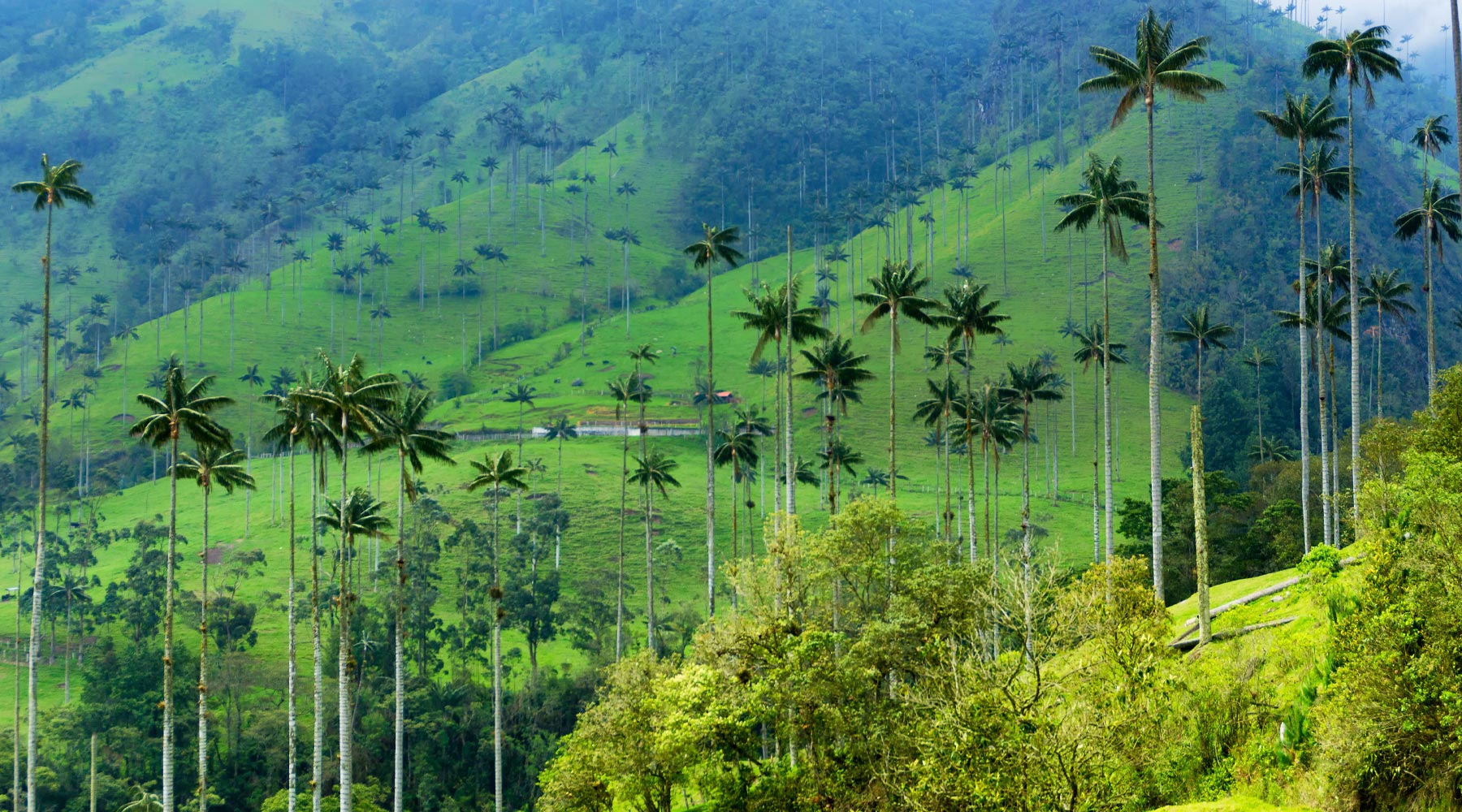Set in northwest Colombia in the Andean mountains, Cocora Valley, originally called Valle del Cocora, is a parkland with surreal extra tall palm trees, green landscapes, a lot of mysteries, and things to unpack. The valley is a segment of the Los Nevados National Natural Park in Quindío, hosting fascinated tourists who like to see a fragment of terrific Colombian nature. This place is so spectacular that you can hardly resist visiting it on your trip to Colombia once you read about it.
How to Get to Cocora Valley
Instructions for getting to this lovely valley depend on where you are staying in Colombia. If you wish to get there from Bogota, located east of the valley, multiple buses are available with an average cost of 30 USD, taking you near Cocora valley in about 10 to 14 hours. For getting to the valley itself, you probably will need to get a car. You can get near to Cocora valley by taxis or planes, spending less time but more money.
Traveling to the valley from the northern Medellín will take less time, but the transport cost does not differ much from the Bogotá path. Now for getting to Cocora valley from Cali in the south will take both less time and cost, and you cannot fly; travelers either have to take a taxi or a bus or drive if they have their own vehicle.
Many tourists who plan to visit the valley prefer to stay in the colorful little town of Salento. They rest in the Salento hostels and travel the 11 km to the valley in a jeep with a super cheap cost of about 3600 COP (Colombian Pesos), which is barely 1 USD.
Some buses can take you to the valley itself, and they move at different times of the day. Waking up early and taking the 6:10 am or 7:30 am bus or willy jeeps allows you to have an unpopulated experience in Cocora valley, but In case you don’t mind being with the crowds, you can choose the 9:30 am bus and the ones after it at9:30 am, 11:30 am, 2:00 pm and 4:00 pm.
The last vehicle leaves the valley at 6 pm. taking the late buses is not recommended if you wish to spend a lot of time in the valley. Cocora valley’s entrance fee is overall 5’000 COP ($1.50).
[woo_mod carouseltype=”review” orderby=”rand” show=”8″ autorotate=”1″ showrow=”4″ cat=”590″]
Hiking Tips
It is pretty common to spend your Cocora Valley trip walking and taking deep breaths while having your eyes on the foggy view of nature ahead of you. There are a few ways to hike in Colombia’s Cocora Valley; if you have problems with being lost or taking the long and rough ways, stick with the guide and the tourist groups.
Full hiking in the valley takes an average of 5 hours; it differs depending on your pace and what path you take. You can hike in a clockwise loop or an anti-clockwise. Don’t forget to bring yourself some water before anything else. The trails on the creeks may look weak or brittle, but don’t worry, they will get you across. There are signs with a map on them throughout the way, so even if you get lost, you don’t need to panic.
About the climate of Cocora valley, you have to know about the Dramatic temperature change. The valley is overall temperate, but it can get a little bit chilly, so having a sweatshirt and/or a raincoat with you may help. On the other hand, it can get suddenly hot, too; it is not unlikely at all. The weather is also humid and wet; you’re walking in a mystical cloud forest anyway!
The ground can be super muddy, so maybe rethink what kind of shoes you want to wear; they WILL get dirty. Wearing comfortable hiking boots is highly recommended. The Clockwise route is easier to hike, but it’s muddier than the anti-clockwise one.
While hiking in the Cocora valley, you will see cute Cows on green fields, all kinds of bugs, little waterfalls, and so many types of trees, including, of course, the iconic Quindío wax palms, which we will talk about it in the following paragraphs in detail. If they are the first things you wish to see, then you can take the short road to the left at the start of the trailhead and get to them in less than an hour.
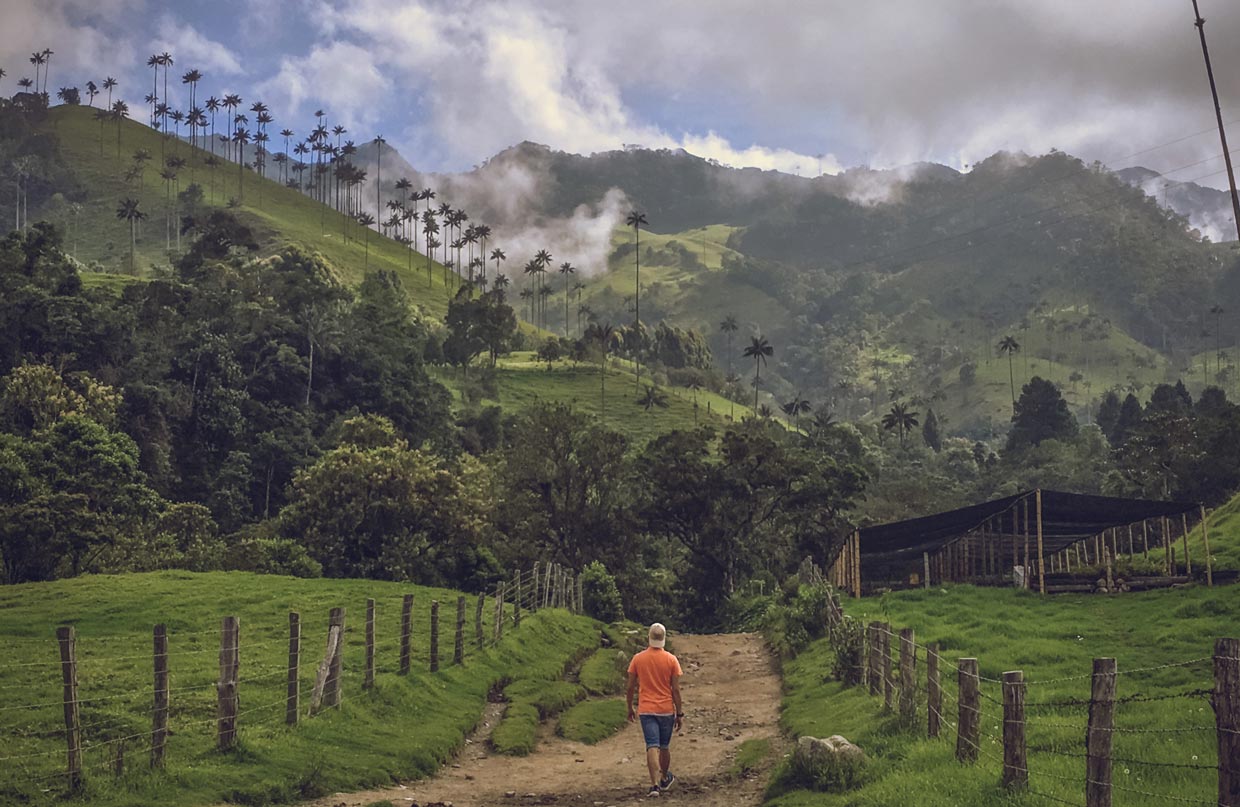
Activities and Places
Some popular activities in Cocora Valley are horse riding, Bird watching, and swimming around the waterfall or in the river. If you want to be inexpensive, you may consider bringing yourself some snacks or even a packed lunch plus some water and just take some rest in the nature reserve.
Then instead of going for exclusive bird watching, you can pay attention to around and above you, and if you’re lucky, your eye will catch some of those graceful animals, like the huge Andean Condor. But if money is not your concern and you want to fully experience every aspect of Cocora Valley, there are plenty of options for you.
The Hummingbird House
Acaime La Casa de Los Colibris, Is like a sanctuary for the adorable little hummingbirds (Trochilidae) and is located midway through your path. You can enjoy watching birds while drinking your hot beverage like hot chocolate, agua panela (a traditional sweet drink), or coffee with a piece of cheese, and all of it will cost you less than 2 USD. You can also watch the birds eat or feed them yourselves because they are friendly. By the way, a little pro tip: dip the cheese in your hot drink; it’s the right way to eat it!
Horse Riding in Cocora Valley
Riding horses around the Cocora Valley is a great option if you do not particularly enjoy walking around, although you have to pay more money this way, and it requires nice weather. There are unique trails for horse riders, and You can have a riding tour for an hourly cost of around 8 USD. You are most likely to have a guide beside you while riding the horses. The horses are tame and lovely, and you will definitely get less tired this way.
Bosques De Cocora
There are many restaurants in the midst of Cocora the Valley. one of them is named Briefly Bosques de Cocora: This is where you can have a taste of the fresh trout dishes or Bandeja Paisa, all with Salads, chips, shrimps, and sauce beside them. You can also try some delicious fruit smoothies named Licuado De Guanabana or the famous Patacones.
Patacones, aka Tostones, are fried green plantains and a part of Latin American cuisine, and they tend to be a little oily sometimes. You also have access to a magnificent nature view while having your lunch, and if you are a fan of excellent views, you may also choose El portal De Cocora restaurant. The prices vary, but they are overall not as cheap as the other parts of your trip! On top of everything, be aware that some restaurants in the valley do not have bathrooms with running waters.
Extraordinary Vegetation
As you may know, Cocora valley is where you can visit the world’s tallest palm trees named Ceroxylon Quindiuense. Those palms are a dozen times more elevated than you. Their frond and fruit usage, plus the wax on these rare palms trunk, made them nearly extinct, but they are now protected and known as the national survival symbol of Colombia. Watching them from below, you can hardly see the top of them. They seem like they genuinely came out of a science-fiction movie!
Wax palms are not the only type of trees you will see on the forest vegetation of the Cocora valley. There are also Pino Romerons (Dissocarpus Rospigliosi), Encenillo (Weinmannia Yormentosa), and many more.
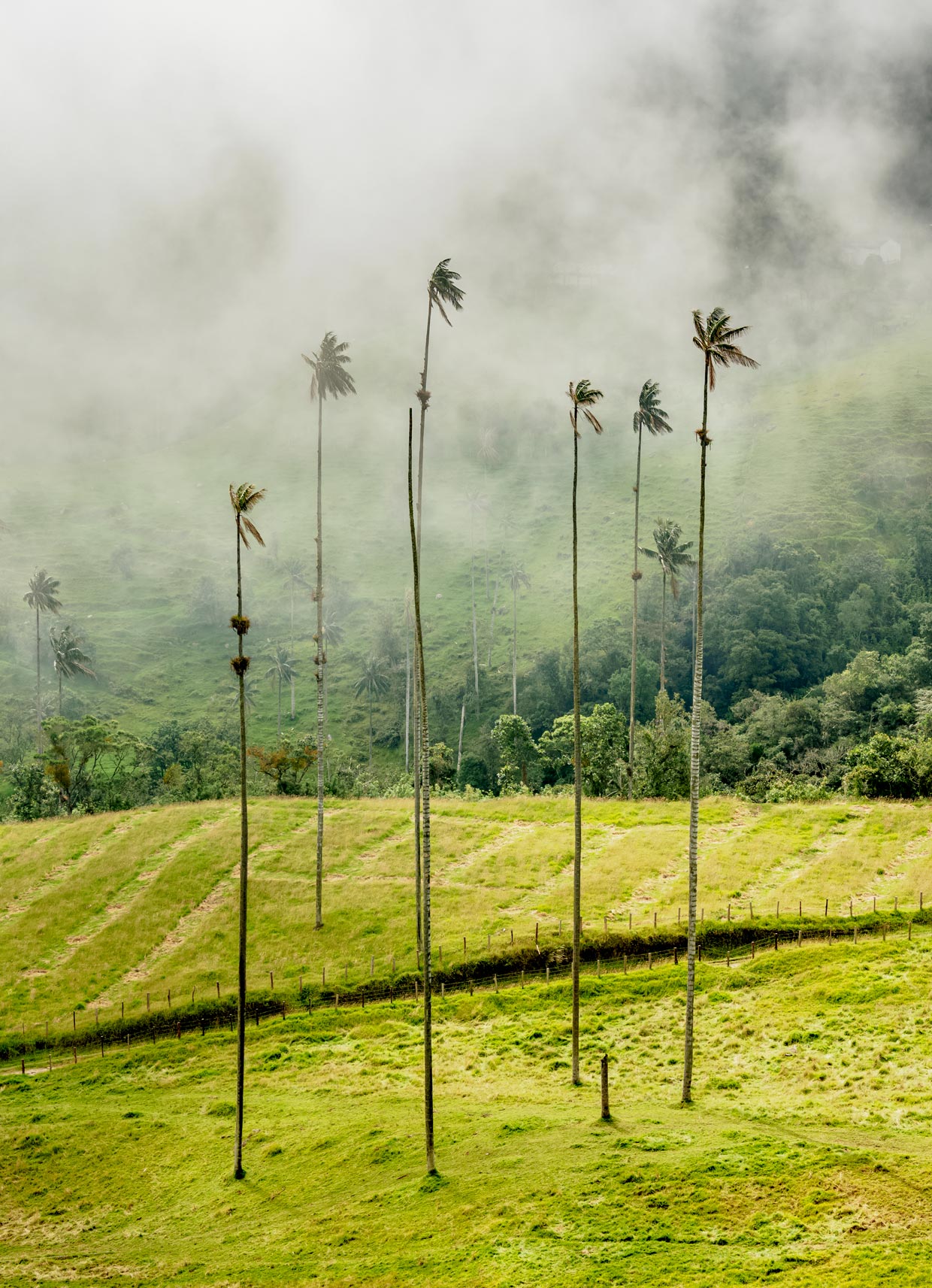
Flowers of Cocora
Let’s not forget about Cocora Valley’s extravagant flowers. In this valley, you will see flowers and plants that you probably didn’t know exist. Wonders like the strange-looking Espeletias (Frailejones) and Puyas are the rare things that you can find only in this part of the planet earth.
You will see the purple Andean princess flower Siete Cueros, also known as Tibouchina Lepidota, or the pretty sun-kissed Arnicas too. You can read the information about Cocora valley’s flora on the little signboards before you start exploring, alongside some info about the valley’s Animals.
The Real Owners
Cocora valley’s Animal life is just as wonderful and unique as the flora. Andean tapir, Andean bear, cougars, and sloths are some of them. As for the Feathered Friends, you may meet while Bird watching; there are endangered Yellow-eared parrots whose another name is Ognorhynchus Icterotis, the fascinating Andigena Nigrirostris aka black-billed mountain-toucan and Andean guan (Penelope Montagnii). They are the real owners of this land. You’d better take care of their territory.
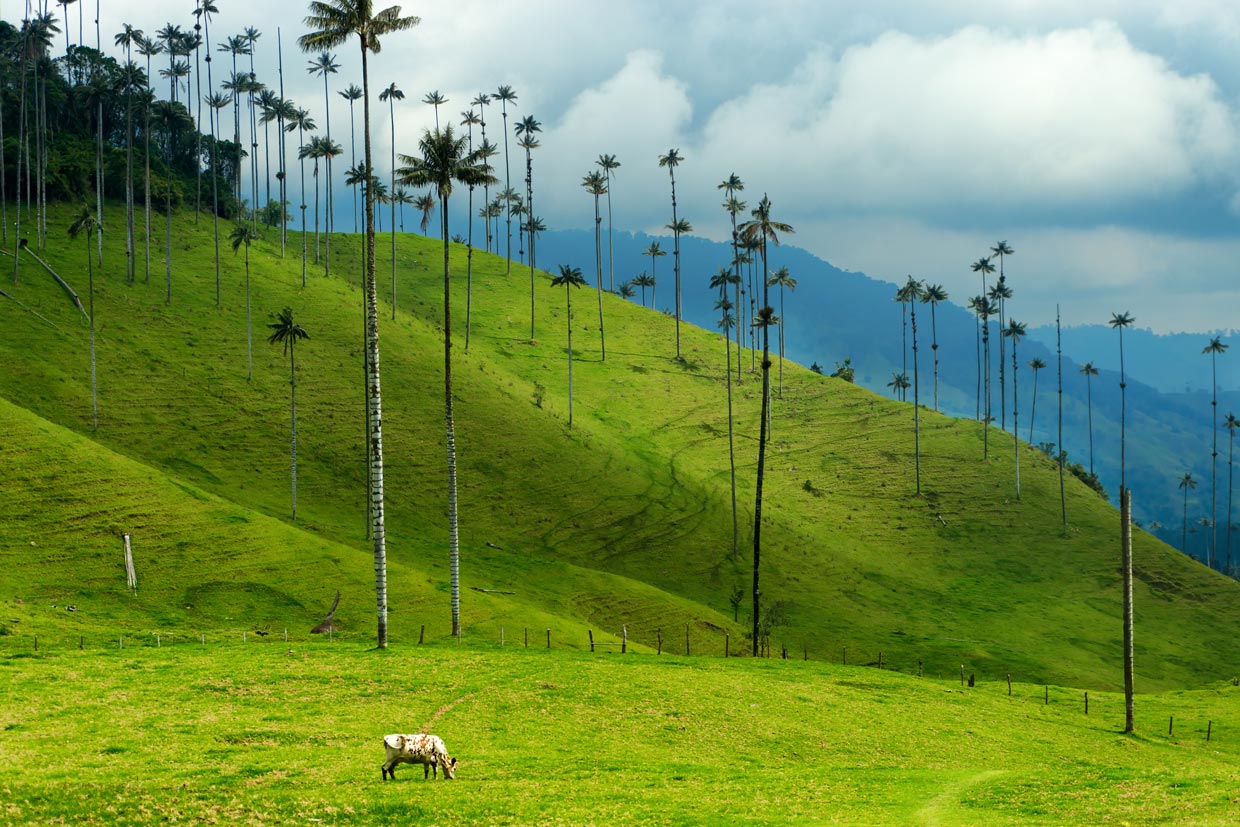
Weather and Climate
The weather of Cocora is pretty warm, and there is significant rainfall throughout the year in this part of the land. It’s better to check the forecasts before your decision making on your trip. Don’t forget that sometimes traveling needs some challenges. You can never expect your journey to be predicted and as you thought. Sometimes rain ruins your trip, but another time you travel to see rain. Anyway, Here we provide you with the table of monthly weather averages.
[wpsm_colortable color=”main-color”]
| Month | Jan | Feb | Mar | Apr | May | Jun | Jul | Aug | Sep | Oct | Nov | Dec |
|---|---|---|---|---|---|---|---|---|---|---|---|---|
| High (°C) | 20 °C | 21 °C | 20 °C | 20 °C | 20 °C | 20 °C | 20 °C | 20 °C | 20 °C | 19 °C | 19 °C | 20 °C |
| Low (°C) | 11 °C | 11°C | 11 °C | 11 °C | 11 °C | 11 °C | 11 °C | 11 °C | 11 °C | 11 °C | 11 °C | 11 °C |
| High(°F) | 69 °F | 69 °F | 69 °F | 68 °F | 67 °F | 67 °F | 68 °F | 69 °F | 68 °F | 67 °F | 67 °F | 67 °F |
| Low(°F) | 52 °F | 52 °F | 52 °F | 52 °F | 52 °F | 52 °F | 52 °F | 52 °F | 51 °F | 51 °F | 52 °F | 52 °F |
[/wpsm_colortable]
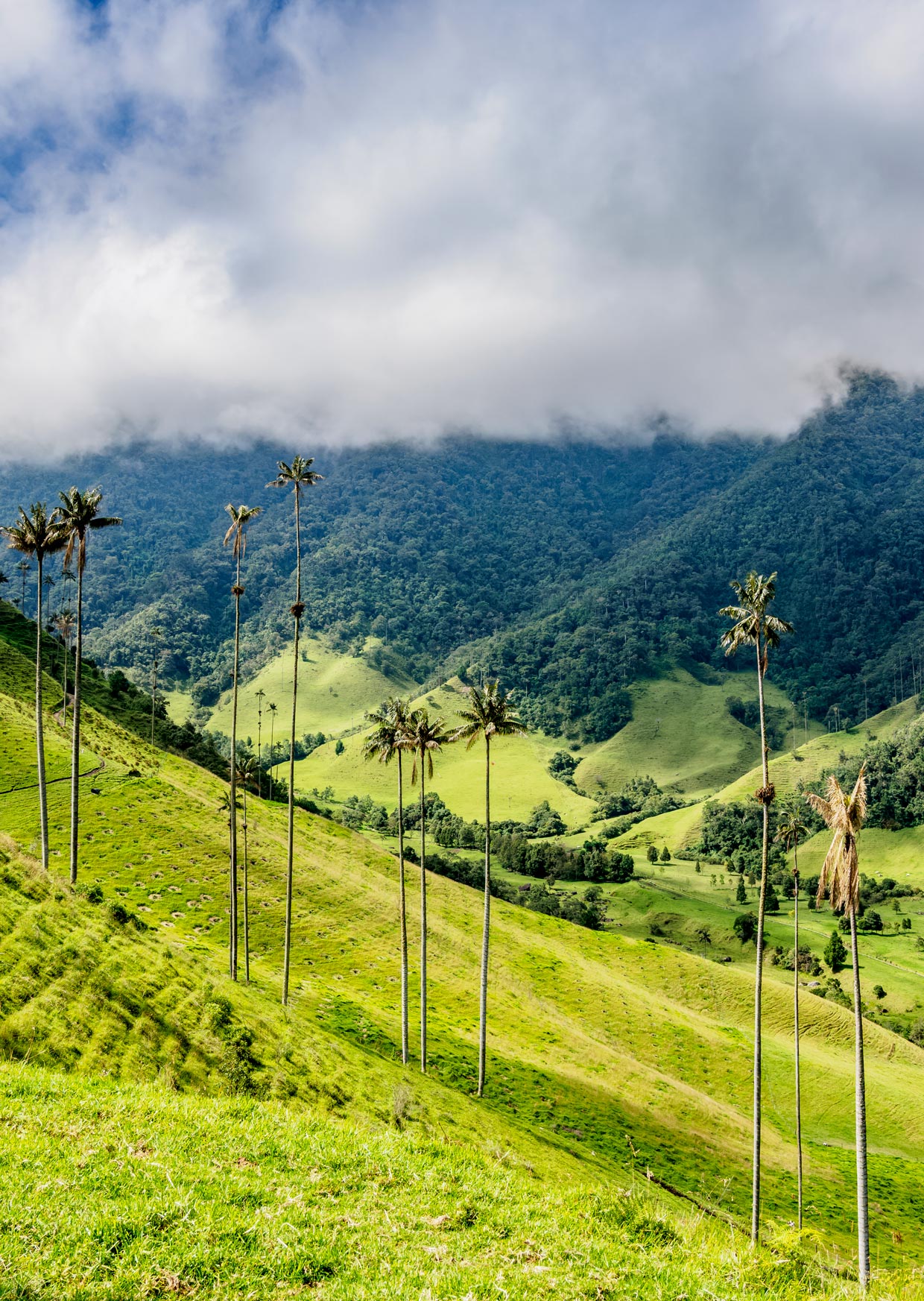
A Take-Away Note
After your little visit, you can get fresh fruit juice from the fruit stands outside and plan your next days in Colombia’s Salento. Maybe visiting the coffee fields or even revisiting Cocora Valley.
Visiting Cocora Valley is one of those rare, peaceful chances that are unmatched. There is no other place like Cocora Valley, and You have to be careful not to lose this opportunity if you ever traveled to Colombia. Come back to this article in case you ever forgot any information about this stunning part of the planet earth.

